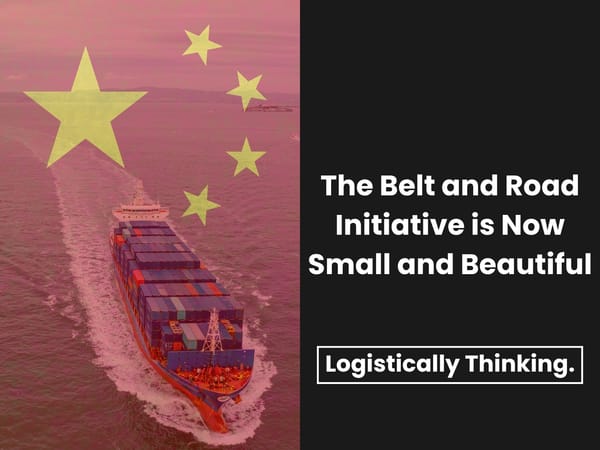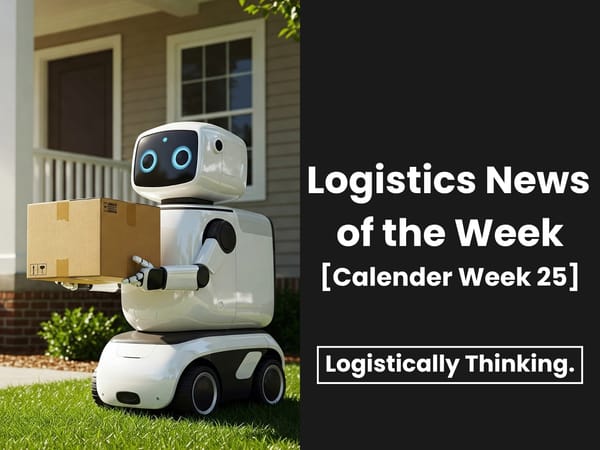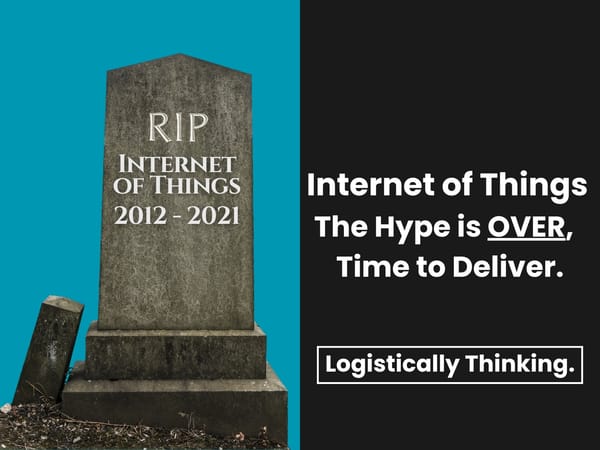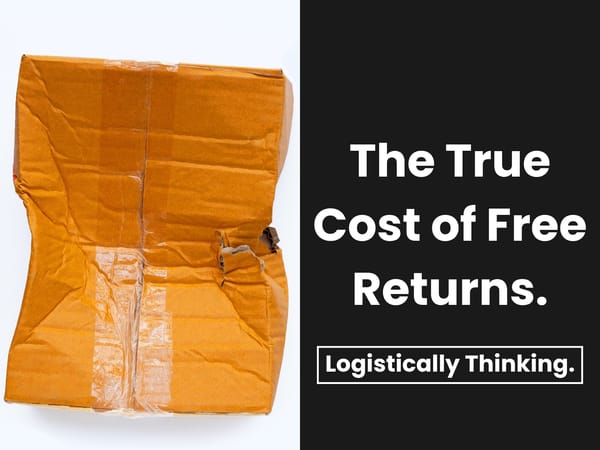Is Dropshipping Dead? No, it's Evolving.
The dropshipping model is not dead; it has evolved. Discover the new blueprint for success, built not on marketing tricks but on logistical excellence and a resilient supply chain.
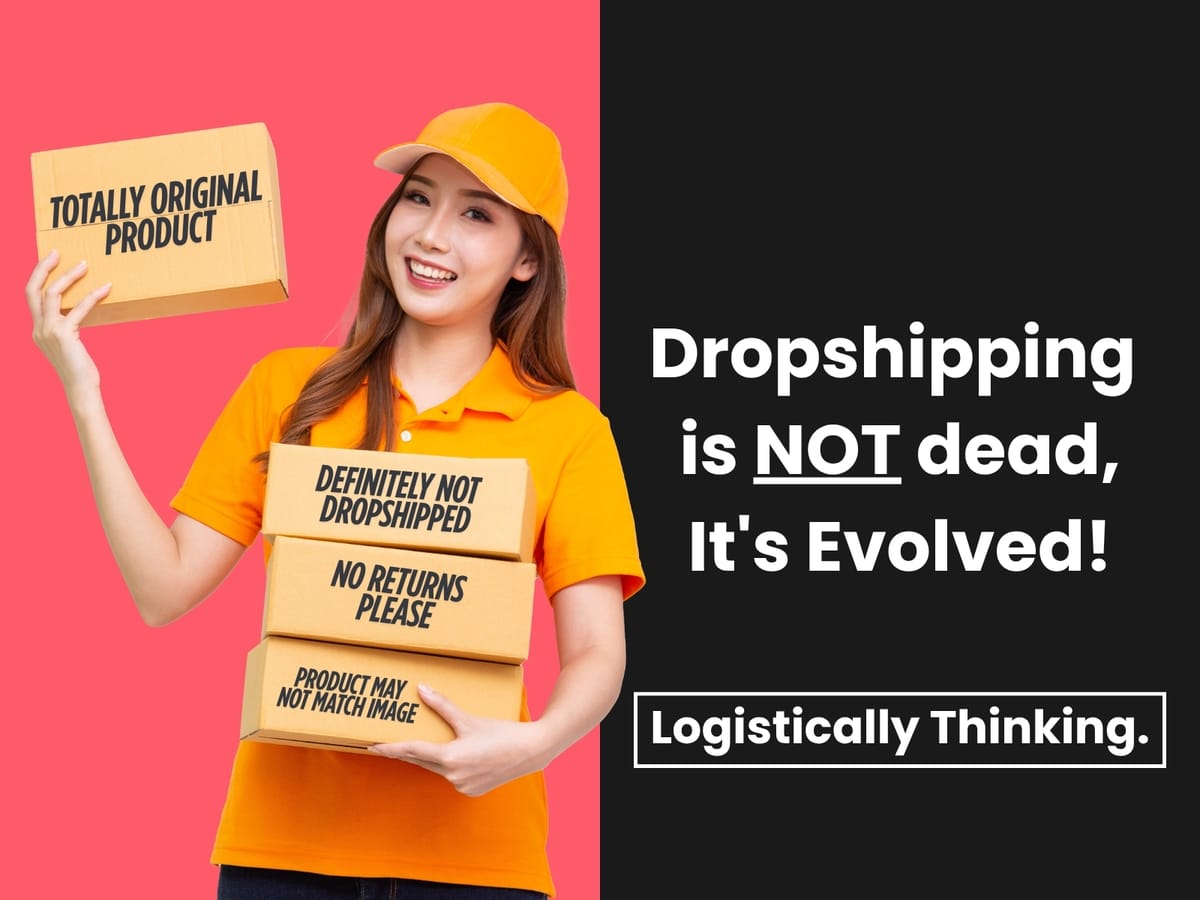
The question has become a perennial headline in e-commerce circles: "Is dropshipping dead?" The model, once lauded as the ultimate low-barrier entry to online retail, has faced a barrage of challenges in recent years, from crushing competition to razor-thin margins.
The simple answer to the question is no. The dropshipping market is not dead; in fact, it is projected to reach $464.4 billion in 2025 and continue its aggressive growth at a CAGR of 22.0% through 2030. But the old version of dropshipping, the one predicated on sourcing from AliExpress and relying on marketing-driven margins for profit, is undoubtedly obsolete.
The persistence of such a high growth rate, despite mounting challenges, is a strong indicator that the model is not dying but rather undergoing significant structural changes. Success today is less about capturing margins through marketing that masks a product's origins, and more about creating genuine value through strategic sourcing and logistical excellence.
Rule #1: Win on Fulfillment, Not Just First Clicks
For many years, dropshipping strategies centered solely on maximizing initial sales. The approach was narrow and focused, with the primary objective being to secure that first purchase, often to the exclusion of all other considerations.
The classic dropshipping business model was predicated on the understanding that most acquired customers would not buy again—a self-fulfilling prophecy driven by vendors knowingly selling inconsistent quality products that would take weeks to deliver from Chinese-based suppliers. This led to an overreliance on shallow sales tactics like permanent "flash sales" or anxiety-inducing countdown timers that create false urgency. While this may work in the short term to drive topline growth, in the long term, profitability is ultimately eroded by the high costs of customer acquisition, returns, and chargebacks.
The wild west era of dropshipping is definitively over. The new battleground for customer loyalty and profitability is not winning the initial click; it is the post-purchase experience. Today, businesses face a fierce profitability squeeze that makes a "fulfillment-as-an-afterthought" model untenable.
Customer acquisition costs have soared, with costs on paid advertising platforms like Meta and Google escalating significantly amid intense competition. Low-price giants like Temu and Shein are rendering smaller retailers uncompetitive with prices and scale that are impossible to match. Compounding this, the cost of operational failure is stark: persistent supply chain disruptions cause companies to lose, on average, about 10% of their annual revenue.
The modern consumer, conditioned by the standards set by global e-commerce leaders, now has non-negotiable expectations. Data indicates that a staggering 85% of consumers will not return to an online store after just one poor delivery experience. The demand for speed is equally intense, with 42% of U.S. consumers demanding a 2-day shipping option as standard.
This shift has fundamentally rewired the formula for success. When surveyed, roughly three out of four online retailers now cite product quality and supplier reliability as their top success factors. The connection to the bottom line is direct: 79% of companies with high-performing supply chains achieve above-average revenue growth.
The message is clear: today's strongest brands are not built on marketing promises, but on logistical proof.
Rule #2: Build a Supplier Network, Not a Dependency
If winning on fulfillment is the goal, then professional supplier management is the most critical lever. The dropshipping model's greatest structural weakness - the lack of direct control over inventory and logistics - must be mitigated through a flexible and resilient approach to sourcing.
84% of online sellers cite establishing reliable supplier relationships as the biggest hurdle when launching a business. The amateur approach of relying on a single, anonymous Chinese supplier is an increasingly untenable risk. Unreliable suppliers directly contribute to the issues that destroy brand reputation: late shipments, substandard packaging, and poor product quality.
The professional response involves building a diversified supplier sourcing network rather than fostering a single fragile dependency. This includes two primary shifts:
- Multi-Supplier Strategy: Smart businesses now forge partnerships with a broader array of suppliers located in different countries, often for the same product. This diversification allows for supply chain resilience, enabling them to route orders to alternate sources in case of stockouts, regional disruptions, or geopolitical issues like tariffs.
- Regional Sourcing: To meet consumer demands for speed and circumvent global trade complexities, there is a discernible shift towards using local and specialized regional suppliers. This is a key reason for the boom in U.S.-based dropshipping—now a $95.3 billion market—which allows sellers to offer the rapid fulfillment that American consumers now expect.
Ultimately, the focus has evolved from simply finding the single cheapest supplier to finding multiple, dependable ones. Building a robust and redundant supplier network is no longer just a risk mitigation tactic; it is a foundational requirement for delivering the kind of modern, reliable online shopping experience that builds sustainable customer trust.
Rule #3: Master the Technology Stack
Managing a diversified, multi-supplier network while meeting the high-stakes fulfillment demands described in the first two rules is impossible to do manually at scale. Having the right technology is a non-negotiable part of the infrastructure of a modern dropshipping operation. Without an automated centralized system, businesses face a chaotic mix of spreadsheets, emails, and manual data entry, leading to stockouts, incorrect order routing, and a complete lack of delivery status visibility, all of which destroy the customer experience.
Automation platforms are now essential for professionalizing operations. The features they provide are no longer just for large-scale players but are becoming the baseline for any competitive business. The core toolkit includes:
- Real-Time Inventory Syncing: This is critical for preventing the cardinal sin of selling a product that a supplier no longer has in stock. A minimally viable setup should conduct multiple daily inventory syncs to ensure data accuracy across all sales channels.
- Intelligent Order Routing: These platforms can automatically send orders to the correct supplier based on a set of predefined business rules, such as stock levels, geographic location, or shipping cost, minimizing manual intervention and errors.
- End-to-End Data Integration: For more advanced operations, especially in B2B, the ability to connect the storefront to supplier systems via EDI (Electronic Data Interchange) and APIs is crucial. This automates the entire lifecycle of an order, from placement to shipment tracking and invoicing.
This level of automation is highly accessible through the robust app ecosystems of major e-commerce platforms. The Shopify App Store, for instance, features a vast marketplace of specialized dropshipping apps that integrate directly with a seller's store, providing these critical automation features as a service.
Such a technology stack is the key enabler of the widespread professionalization trend. It provides the operational backbone that allows a business to scale its sophisticated, multi-supplier fulfillment strategy efficiently, delivering the reliability and speed that today's market demands.
Rule #4: Treat Regulatory Compliance as a Competitive Moat
The regulatory landscape for e-commerce is rapidly maturing, and the golden age of frictionless cross-border trade is now being fenced in by stringent rules. For savvy operators, this is not a threat; it is an opportunity. Treating compliance as a core business function creates a defensible moat that weeds out low-effort competitors and rewards professionalism.
A primary example is the closing of the "tariff-free window." The United States has eliminated the de minimis exemption for shipments from China as of May 2025, subjecting all such imports, regardless of value, to tariffs and duties. The European Union took similar action in 2021 by removing its VAT de minimis exemption for low-value goods. These changes fundamentally dismantle the financial model of businesses built on shipping low-cost individual items from China customs-free.
Simultaneously, the European Union is erecting a "green wall" with its Packaging and Packaging Waste Regulation (PPWR). This comprehensive legislation will ban excessive packaging, such as shipping packages containing more than 50% empty space, and requires all packaging to be fully recyclable by 2030. Crucially, under Extended Producer Responsibility (EPR) schemes, the dropshipping seller is now financially accountable for the recycling of the packaging they introduce to the market. This is not a distant concern, as major marketplaces like Amazon are already requiring EPR registration and suspending sellers who fail to comply.
While these regulations create hurdles, they also illuminate a clear path to differentiation. With cross-border air freight generating 10x or more the carbon emissions of local fulfillment, a move to regional sourcing becomes both a compliance strategy and a powerful marketing story. Brands like EarthHero, which are built on a foundation of sustainable products and plastic-free, carbon-neutral shipping, demonstrate that "green dropshipping" is a powerful way to build the sustainable brand trust that modern consumers demand.
Rule #5: Expand the Playing Field to B2B
With a resilient B2C operation as a foundation, the most significant growth vector for the modern dropshipping enterprise now lies in the Business-to-Business (B2B) sector. While B2C gets the most attention, the overall B2B e-commerce market is massive, valued at $20.4 trillion globally.
The strategy allows established manufacturers and distributors to offer an endless aisle of products with minimal capital risk. For example, industrial supplier Zoro.com radically expanded its online catalog from 180,000 items to over 4 million by onboarding a network of dropship partners. This allows them to capture long-tail demand for specialized items without the immense cost of stocking that inventory themselves.
Beyond expanding existing catalogs, the model offers a capital-efficient strategy for low-risk market and product testing. For instance, a distributor of conventional office supplies can partner with eco-product suppliers to dropship a new line of sustainable goods. By featuring them on their website and fulfilling initial orders via dropshipping, they can accurately gauge market interest and sales velocity with minimal financial risk before committing to stocking inventory.
However, this frontier is protected by a high technical barrier to entry. Success in B2B dropshipping is impossible without a sophisticated IT infrastructure built on EDI (Electronic Data Interchange), which still accounts for over 76% of B2B digital transactions. This complexity is precisely what makes the B2B space a defensible moat for serious, technologically adept operators.
The Bottom Line: It's a New Era of Fulfillment
The evolution of dropshipping is a clear signal of the maturation of e-commerce itself. The blueprint for success has been redrawn, moving beyond simple arbitrage to a sophisticated model built on a new set of rules: winning on fulfillment, building a resilient network, mastering the technology stack, treating compliance as a moat, and expanding strategically into B2B.
The challenges identified throughout this blueprint—fierce competition, demanding consumers, and a stringent regulatory landscape—are not signs of a dying trend. They are potent filters, compelling an evolution and rewarding professionalism. The lines are blurring between what might have once been considered a "dropshipper" versus a true "brand," with success today being a testament to robust logistical capabilities.
The future of this model belongs not to those who can find the cheapest shortcut, but to the strategic operators who can build and manage a reliable, resilient, and responsible fulfillment engine.
A Note from the Editor: Is your fulfillment strategy built for this new era? Subscribe to our weekly newsletter, (Supply) Chain of Thought, for more strategic analyses at the intersection of commerce and supply chain.

